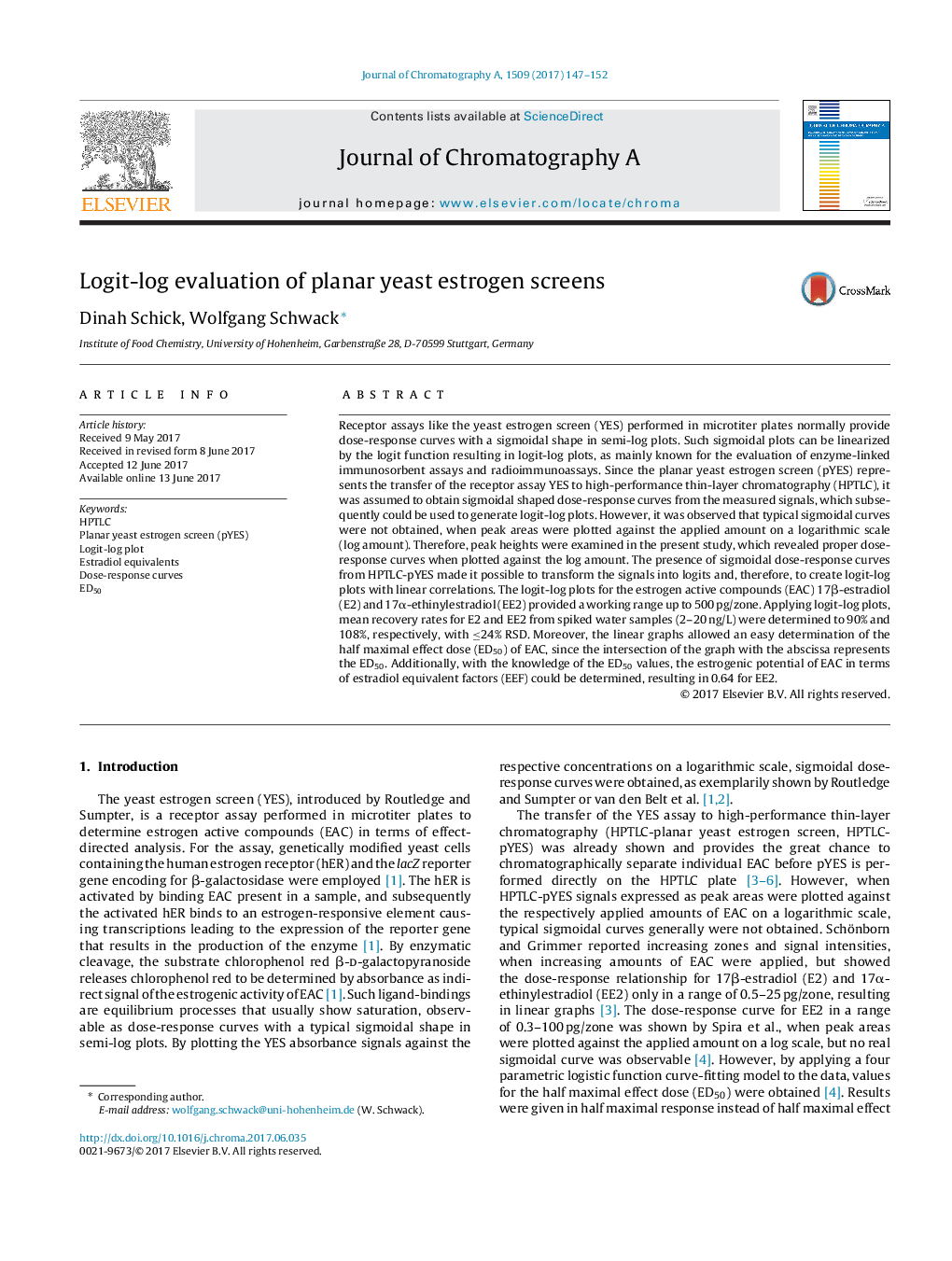| Article ID | Journal | Published Year | Pages | File Type |
|---|---|---|---|---|
| 5135029 | Journal of Chromatography A | 2017 | 6 Pages |
â¢Proper sigmoidal dose-response curves from a planar yeast estrogen screen (pYES) were presented.â¢Sigmoidal curves were successfully transformed into logit-log plots showing linear graphs for evaluation.â¢Logit-log plots provided a working range of 5-500 pg/zone for both 17β-estradiol and 17α-ethinylestradiol.â¢Applicability of logit-log evaluation of pYES was demonstrated.â¢The easy determination of ED50 values and thus estradiol equivalent factors was shown.
Receptor assays like the yeast estrogen screen (YES) performed in microtiter plates normally provide dose-response curves with a sigmoidal shape in semi-log plots. Such sigmoidal plots can be linearized by the logit function resulting in logit-log plots, as mainly known for the evaluation of enzyme-linked immunosorbent assays and radioimmunoassays. Since the planar yeast estrogen screen (pYES) represents the transfer of the receptor assay YES to high-performance thin-layer chromatography (HPTLC), it was assumed to obtain sigmoidal shaped dose-response curves from the measured signals, which subsequently could be used to generate logit-log plots. However, it was observed that typical sigmoidal curves were not obtained, when peak areas were plotted against the applied amount on a logarithmic scale (log amount). Therefore, peak heights were examined in the present study, which revealed proper dose-response curves when plotted against the log amount. The presence of sigmoidal dose-response curves from HPTLC-pYES made it possible to transform the signals into logits and, therefore, to create logit-log plots with linear correlations. The logit-log plots for the estrogen active compounds (EAC) 17β-estradiol (E2) and 17α-ethinylestradiol (EE2) provided a working range up to 500 pg/zone. Applying logit-log plots, mean recovery rates for E2 and EE2 from spiked water samples (2-20 ng/L) were determined to 90% and 108%, respectively, with â¤24% RSD. Moreover, the linear graphs allowed an easy determination of the half maximal effect dose (ED50) of EAC, since the intersection of the graph with the abscissa represents the ED50. Additionally, with the knowledge of the ED50 values, the estrogenic potential of EAC in terms of estradiol equivalent factors (EEF) could be determined, resulting in 0.64 for EE2.
